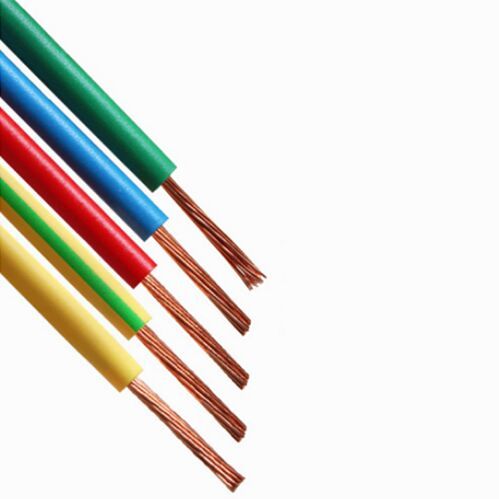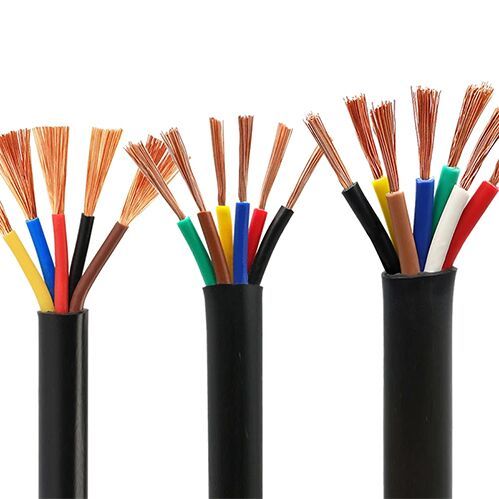News
Have you ever been puzzled by the huge price differences when purchasing communication cables (such as Ethernet cables, phone lines, coaxial cables)? Products that seem similar may vary in price several times over. Behind this discrepancy lies a clear logic, as prices directly reflect the "intrinsic value" of the cable.
Today, we will delve into the underlying layers of the industry chain to unveil the four core factors that influence the cost of communication cables, helping you make the most informed procurement decisions.


Factor One: Conductor Material - The "Fixed Star" of Costs
The conductor carries current and signals, with its material being the most significant cost component.
Oxygen-Free Copper:
Characteristics: Purity exceeding 99.95%, very low resistivity, minimal signal transmission loss, stable performance, and long lifespan.
Cost Impact: Highest. Copper is a precious metal, with prices directly influenced by international market fluctuations. Using oxygen-free copper ensures high-quality transmission performance (especially for PoE power supply and high-speed networks), but it also results in the highest cost.
Copper-Clad Aluminum:
Characteristics: A layer of copper wrapped around an aluminum core. Aluminum has higher resistivity than copper, leading to higher cable resistance for the same specifications, more significant signal attenuation, and risks of oxidation and brittleness over extended use.
Cost Impact: Lower. Aluminum prices are much lower than copper, significantly reducing costs, but at the expense of performance and long-term reliability. Suitable only for short distances, low speeds, and temporary scenarios.
Copper-Clad Steel:
Characteristics: A layer of copper wrapped around a steel core. Extremely high resistivity, primarily suitable for very short-distance signal transmission and unsuitable for power transmission (such as PoE).
Cost Impact: Lowest. Steel is very cheap, but it also has the worst electrical performance. These products typically do not meet national standards and are only suitable for scenarios with extremely low performance requirements.
Conclusion: "You get what you pay for." The choice of conductor material is the primary and fundamental reason leading to price discrepancies.
Factor Two: Insulation and Sheath Materials - The Safety "Guardian"
The material surrounding the conductor determines the cable's durability, safety, and environmental friendliness.
Regular PVC:
Characteristics: Low cost, good flexibility, but relatively poor heat resistance (usually 70°C), releasing large amounts of dense smoke and toxic, corrosive halogen gases during combustion.
Cost Impact: Economical. A traditional cost-control solution.
Low Smoke Zero Halogen (LSZH) Materials:
Characteristics: Based on polyolefins with added metal hydrate flame retardants. Low smoke density and absence of halogen gases during combustion make it a safer and more environmentally friendly choice.
Cost Impact: Higher. The cost of LSZH materials is 1.5-2 times that of PVC, with higher production process requirements. However, for data centers, subways, hospitals, and other densely populated areas, this investment is crucial for life safety.
Conclusion: The higher the requirements for safety and environmental friendliness, the higher the cost of insulation and sheath materials.
Factor Three: Production Processes and Equipment - The "Invisible Hand" of Quality
The same materials, different levels of craftsmanship, result in vastly different product performances.
Insulation Concentricity: High-end equipment ensures extremely uniform insulation thickness and minimal eccentricity, guaranteeing stable characteristic impedance and signal integrity. Poor craftsmanship leads to increased signal reflection and attenuation.
Pair-to-Pair Twist Accuracy: In twisted pair cables, precisely controlling the twist rate of each pair is crucial in effectively combating electromagnetic interference. Inaccurate production cannot ensure precise twist rates, leading to a sharp deterioration in crosstalk performance.
Shielding Coverage: For shielded cables, the coverage of the braided shield (e.g., ≥85%) directly affects the shielding effectiveness. Higher coverage implies more materials and a more complex process, naturally increasing costs.
Conclusion: Precision craftsmanship requires advanced equipment and strict management support. This investment ensures product high performance and consistency, and is a crucial component of brand premium.
Factor Four: Certification and Standards Compliance - The Market's "Passport"
Compliance costs are the "reefs" many low-priced products try to avoid.
Mandatory Domestic Certification: In the Chinese market, cable products need to pass CCC certification. This entails a series of rigorous tests and ongoing production supervision, incurring costs.
International Certification: Exported products must meet the standards of the target market, such as CE/CPR in the EU, UL certification in the United States. The application, testing, and maintenance costs of these certifications are high.
Third-Party Testing: Responsible brands regularly submit products to third-party authoritative institutions (such as TÜV, SGS) for testing to ensure continuous performance compliance.
The Pitfall of Low Prices: Many extremely low-priced cables are "three-no" products or have forged certifications, without undergoing rigorous testing. They lack performance and safety guarantees, posing significant risks in project acceptance or safety incidents.
In Summary: How to Rationally Consider Prices?
The cost of communication cables can be summarized in the following formula:
Total Cost = Conductor Material Cost + Insulation/Sheath Material Cost + Production Process Cost + Certification and Compliance Cost
When faced with price differences, make sure to ask yourself a few questions:
1.Is the conductor oxygen-free copper? Does the resistance meet standards?
2.Do you need the safety features of low smoke zero halogen materials?
3.Can the production process ensure transmission performance (e.g., passing Fluke tests)?
4.Does the product have genuine and effective authoritative certifications?
Final Advice:
Cables are infrastructure, with their cost being a small proportion of the overall project but serving as the system's "lifeline." Avoid choosing products with hidden risks in pursuit of extreme low prices. Rational procurement involves finding the best value-for-money solution based on clear performance and safety requirements, rather than opting for the lowest price.
Henan Huanghe Cable&Wire Company's commitment: The cables we manufacture strictly comply with domestic and international standards, undergo regular inspections, and support sample testing to ensure product quality. We offer a one-year quality guarantee and after-sales service, and are committed to providing customers with high-quality, reliable products and services.
Let our cables be a reliable choice for your projects, providing solid support for your communications networks.

